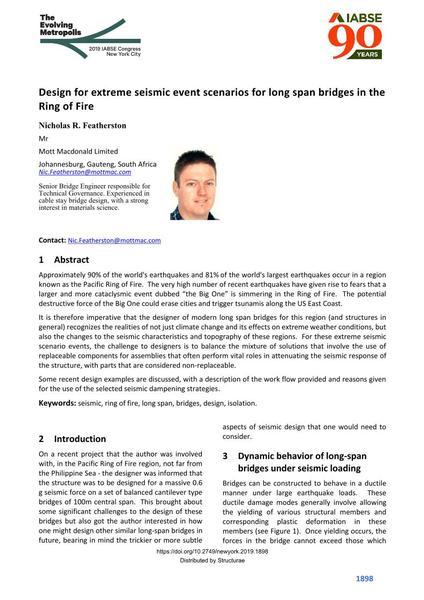Design for extreme seismic event scenarios for long span bridges in the Ring of Fire

|
|
|||||||||||
Bibliographic Details
| Author(s): |
Nicholas R. Featherston
(Mott Macdonald Limited)
|
||||
|---|---|---|---|---|---|
| Medium: | conference paper | ||||
| Language(s): | English | ||||
| Conference: | IABSE Congress: The Evolving Metropolis, New York, NY, USA, 4-6 September 2019 | ||||
| Published in: | The Evolving Metropolis | ||||
|
|||||
| Page(s): | 1898-1903 | ||||
| Total no. of pages: | 6 | ||||
| DOI: | 10.2749/newyork.2019.1898 | ||||
| Abstract: |
Approximately 90% of the world's earthquakes and 81% of the world's largest earthquakes occur in a region known as the Pacific Ring of Fire. The very high number of recent earthquakes have given rise to fears that a larger and more cataclysmic event dubbed “the Big One” is simmering in the Ring of Fire. The potential destructive force of the Big One could erase cities and trigger tsunamis along the US East Coast. It is therefore imperative that the designer of modern long span bridges for this region (and structures in general) recognizes the realities of not just climate change and its effects on extreme weather conditions, but also the changes to the seismic characteristics and topography of these regions. For these extreme seismic scenario events, the challenge to designers is to balance the mixture of solutions that involve the use of replaceable components for assemblies that often perform vital roles in attenuating the seismic response of the structure, with parts that are considered non-replaceable. Some recent design examples are discussed, with a description of the work flow provided and reasons given for the use of the selected seismic dampening strategies. |
||||
| Keywords: |
design bridges isolation seismic long span ring of fire
|
||||
